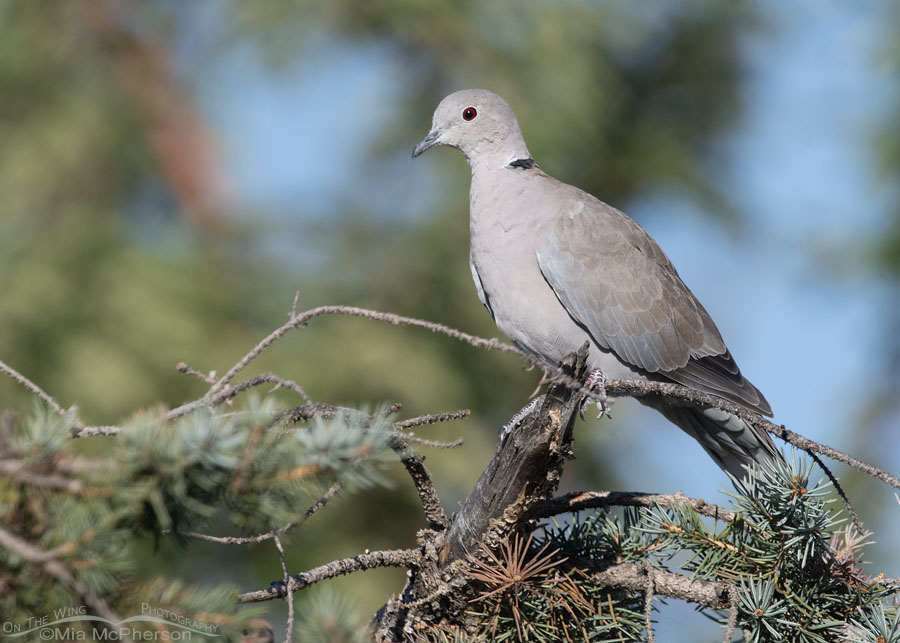Yesterday, I shared some Mourning Dove photos taken at Farmington Bay WMA. Today, my subject is a Eurasian Collared-Dove also photographed on the same day.
 Eurasian Collared-Dove in a conifer – Nikon D500, f9 1/1250, ISO 500, Nikkor 500mm VR with 1.4x TC, natural light
Eurasian Collared-Dove in a conifer – Nikon D500, f9 1/1250, ISO 500, Nikkor 500mm VR with 1.4x TC, natural light
I spotted this Eurasian Collared-Dove perched in a conifer in lovely light as I was driving towards the nature center. This nonnative dove species catches my eye because of their soft gray plumage and ruby-red eyes.
Even though this doves species isn’t native I stop to photograph them when I have the chance. It isn’t their fault they are here.
Eurasian Collared-Doves (Streptopelia decaocto) are native to the Indian subcontinent and Southeast Asia, but they have successfully expanded their range to North America over the past century. These Eurasian Collared-Doves are highly adaptable and can thrive in a variety of habitats, including urban areas. This adaptability has allowed them to rapidly colonize new territories.
Once established in Florida in the 1970s, Eurasian Collared-Doves rapidly expanded their range across the United States and Canada. They are known for their ability to colonize new areas quickly, aided by their reproductive capacity and adaptability to various environmental conditions.
Eurasian Collared-Doves have also been successful in part due to their competitive advantage over native dove species. They are often larger and more aggressive, which can give them an edge in securing food resources and nesting sites.
Today, Eurasian Collared-Doves can be found across much of North America, from southern Canada to Mexico, and they continue to expand their range into new areas. Their presence in North America is a prime example of how a combination of natural dispersal and human activities can result in the establishment and proliferation of non-native species in new environments.
Native or non-native, birds will always get my attention.
Life is good.
Mia
Click here to see more of my Eurasian Collared-Dove photos plus facts and information and information about this species.


Beautiful things. And you are right. We brought so many interlopers in and shouldn’t blame them when they thrive.
Your timing is perfect! We have Mourning Doves in our neighborhood (I’ve yet to see their Eurasian counterpart right here). While taking mama dog out for her morning “constitutional” in the backyard, there was a huge meeting of adults and juveniles on the telephone wires. I counted 22 birds! Must have been a short agenda, though, because by the time mama finished and I grabbed my phone, only 3 adults were left. (Gotta remember to bring the phone with me!)
There are also 5 huge Orbweavers in my yard. Hoping for some closeups once the sun comes out. ☀️